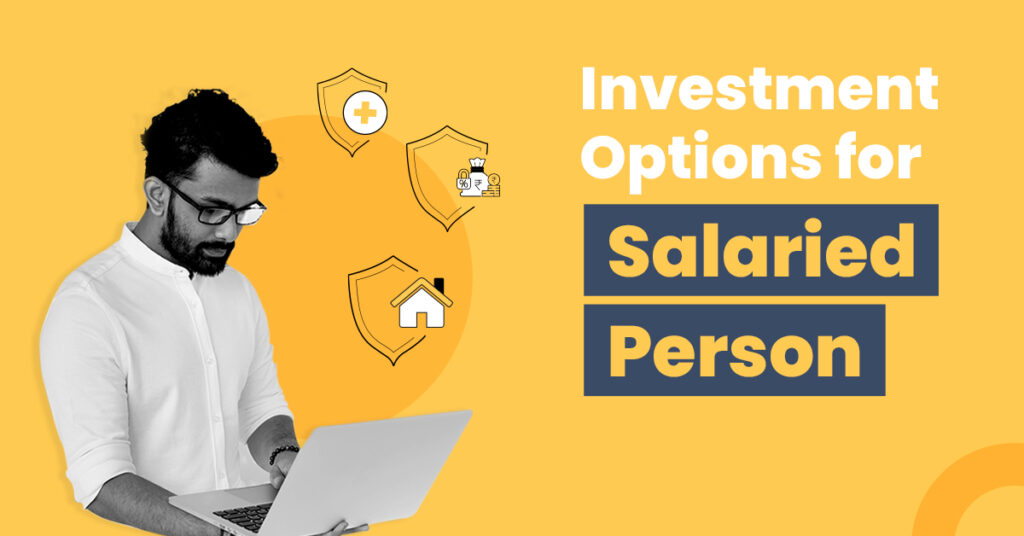Best Investment Options for Salaried Employees in India (2025 Edition)
In today’s fast-paced world, managing your salary isn’t just about saving—it’s about growing your wealth wisely. If you’re a salaried employee in India, chances are you juggle multiple financial responsibilities—EMIs, rent, family expenses, and aspirations like owning a house or planning your child’s education.
So how do you make your hard-earned money work for you? The answer lies in smart, consistent investing.
This guide will help you understand the best investment options available in India, especially curated for salaried individuals like you who want to build wealth, save tax, and secure their future.
🧠 Why Should Salaried Employees Invest?
Let’s be honest. Relying only on your salary is risky. Inflation eats away your savings, and emergencies are unpredictable.
Investing helps you:
- Grow your wealth steadily over time
- Achieve financial goals (home, car, education, travel, retirement)
- Save on taxes
- Beat inflation
- Create a second source of income
💡 1. Employee Provident Fund (EPF)
✅ Best for: Retirement savings
💸 Returns: ~8.1% p.a. (tax-free)
💼 Tax Benefit: Under Section 80C
EPF is a mandatory saving scheme for salaried employees in India, where both employer and employee contribute 12% of the basic salary. It’s a safe, long-term investment with tax benefits.
👉 Pro Tip: Don’t withdraw it when you switch jobs—let it grow.
💰 2. Public Provident Fund (PPF)
✅ Best for: Long-term goals like child’s education or marriage
💸 Returns: ~7.1% p.a. (tax-free)
💼 Lock-in: 15 years
💼 Tax Benefit: Under Section 80C
PPF is a government-backed, risk-free investment. Ideal for conservative investors.
👉 Pro Tip: Even if you already have EPF, open a PPF account for your spouse or child to multiply long-term benefits.
📈 3. Systematic Investment Plan (SIP) in Mutual Funds
✅ Best for: Wealth building over 5–15 years
💸 Returns: 10–15% (historical average for equity funds)
💼 Tax Benefit: ELSS category under 80C
SIPs let you invest small amounts monthly in mutual funds. It’s disciplined, automated, and flexible.
👉 Pro Tip: Start with as little as ₹500/month. Stick for the long term and choose diversified equity funds if your goal is >5 years away.
📊 4. Equity Linked Savings Scheme (ELSS)
✅ Best for: Tax-saving + higher returns
💸 Returns: 10–12% historically
💼 Lock-in: 3 years (shortest among 80C options)
💼 Tax Benefit: Under Section 80C
ELSS combines the benefits of mutual funds and tax-saving. A great choice for young earners with higher risk appetite.
👉 Pro Tip: Use SIP mode for ELSS investments to average out market volatility.
🏠 5. National Pension System (NPS)
✅ Best for: Retirement planning
💸 Returns: 8–10%
💼 Tax Benefit: 80CCD(1B) additional ₹50,000
NPS invests in a mix of equity, corporate bonds, and government securities. You get regular pension post-retirement and optional lump sum withdrawal.
👉 Pro Tip: Invest ₹50,000 per year for extra tax savings beyond 80C limit.
🪙 6. Direct Stock Market Investment
✅ Best for: High risk, high return seekers
💸 Returns: Potentially high, but volatile
💼 Tax Benefit: Long-Term Capital Gains (LTCG) over ₹1 lakh taxed at 10%
If you understand the markets, stocks can offer great returns. But it requires time, research, and patience.
👉 Pro Tip: Invest only what you can afford to lose and avoid herd mentality.
🏡 7. Real Estate
✅ Best for: Long-term wealth & rental income
💸 Returns: 6–10% (rental + appreciation)
💼 Tax Benefit: Deduction on home loan interest
Buying a house is a major goal for many Indians. While not very liquid, property can generate passive rental income.
👉 Pro Tip: Don’t over-leverage on home loans. Invest only if it fits your long-term plan.
🪙 8. Gold (Digital/ETF/Sovereign Bonds)
✅ Best for: Diversification & festive savings
💸 Returns: 6–8%
💼 Tax Benefit: None (unless SGB)
Digital gold or Sovereign Gold Bonds (SGBs) are smarter alternatives to physical gold. They are safe, government-backed, and earn interest too.
👉 Pro Tip: Allocate no more than 10% of your portfolio in gold.
🧾 9. Recurring Deposits (RD) / Fixed Deposits (FD)
✅ Best for: Ultra-safe investments
💸 Returns: 6–7.5%
💼 Tax Benefit: Only for 5-year tax-saving FD under 80C
Though not ideal for wealth creation, RDs and FDs offer capital safety and liquidity.
👉 Pro Tip: Use FDs only for short-term parking of emergency funds.
📲 10. Digital Investment Platforms (Groww, Zerodha, INDmoney, ET Money)
✅ Best for: DIY investing, tracking, planning
💼 Perks: Goal-based investing, financial planning tools
These apps make it easy for salaried employees to automate SIPs, track goals, and invest with little effort.
👉 Pro Tip: Stick to one or two platforms to avoid spreading your portfolio too thin.
📌 Conclusion
As a salaried employee in India, your investment strategy should focus on:
- Diversification – Mix of equity, debt, and fixed-income
- Consistency – Invest every month, even small amounts
- Goal-based planning – Tie your investments to life goals
- Tax efficiency – Use 80C, NPS, and other deductions
- Staying invested – Wealth grows with time, not timing
Your salary is limited, but your wealth potential is unlimited if you plan smartly and start early.
Read More:https://wealthfitlife.com/how-to-save-tax-in-india-best-investment-options-under-section-80c/
❓ 10 Frequently Asked Questions (FAQs)
1. What is the safest investment option for salaried employees in India?
EPF, PPF, and FDs are considered the safest as they are government-backed and risk-free.
2. How much should I invest from my salary every month?
Aim for 20–30% of your monthly salary, increasing it as your income grows.
3. Can I invest in both EPF and PPF?
Yes, and it’s a great strategy for long-term wealth and tax savings.
4. Is SIP better than FD for salaried individuals?
Yes, for long-term goals. SIPs in mutual funds offer higher returns compared to FDs.
5. What if I want to invest only ₹1,000 per month?
Start with SIPs in mutual funds. Many platforms allow ₹500 SIPs.
6. Which investment is best for tax saving under 80C?
ELSS funds, PPF, EPF, NPS, and 5-year FDs are popular tax-saving tools.
7. Should I take risks with stock markets?
Only if you understand the market or can spare time to learn. Else, go for mutual funds.
8. How do I plan for retirement as a salaried person?
Combine EPF + PPF + NPS + SIPs to build a diversified retirement corpus.
9. Is real estate a good investment for salaried people?
It can be, if you are not taking heavy loans and are in for the long term.
10. Can I invest online without a financial advisor?
Absolutely! Use trusted platforms like Groww, Zerodha, Paytm Money, or INDmoney.

